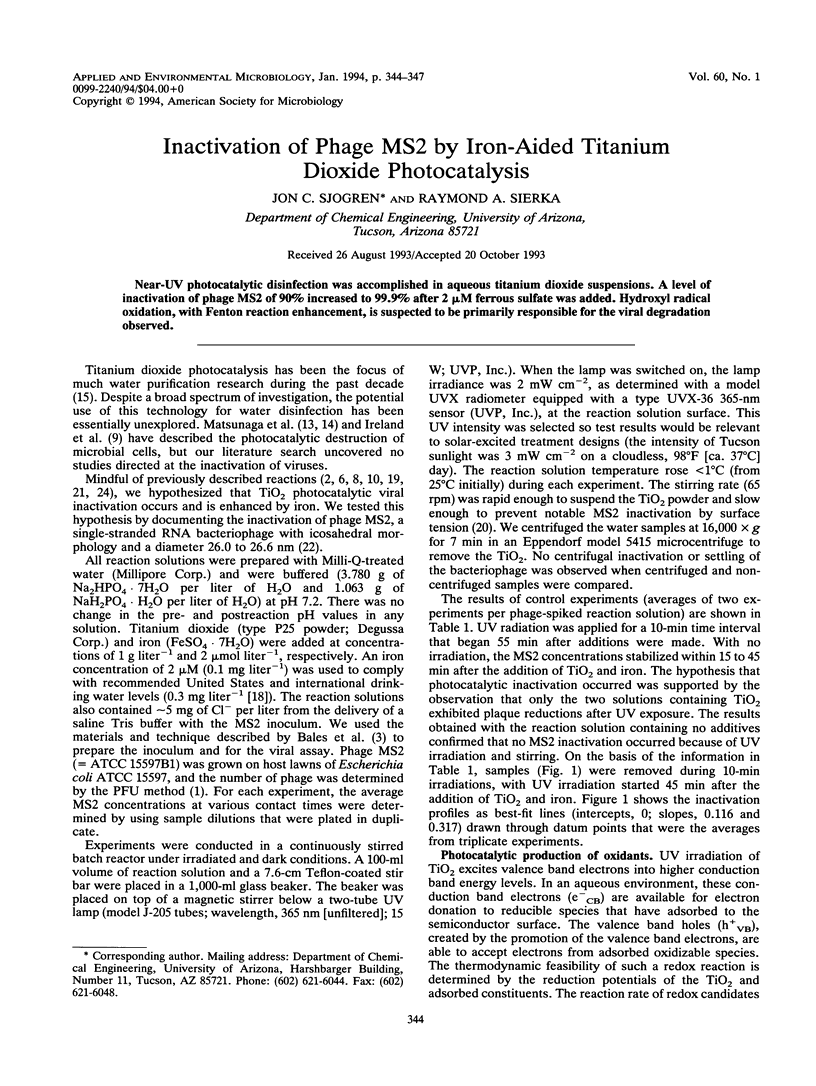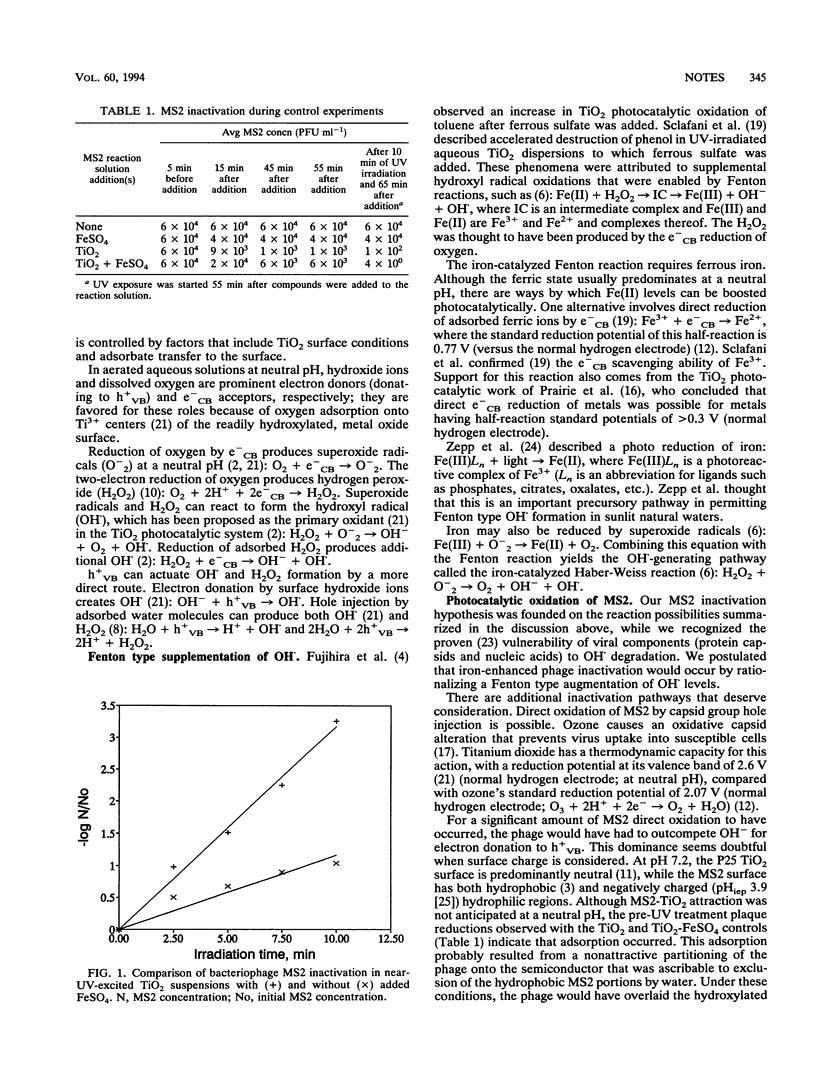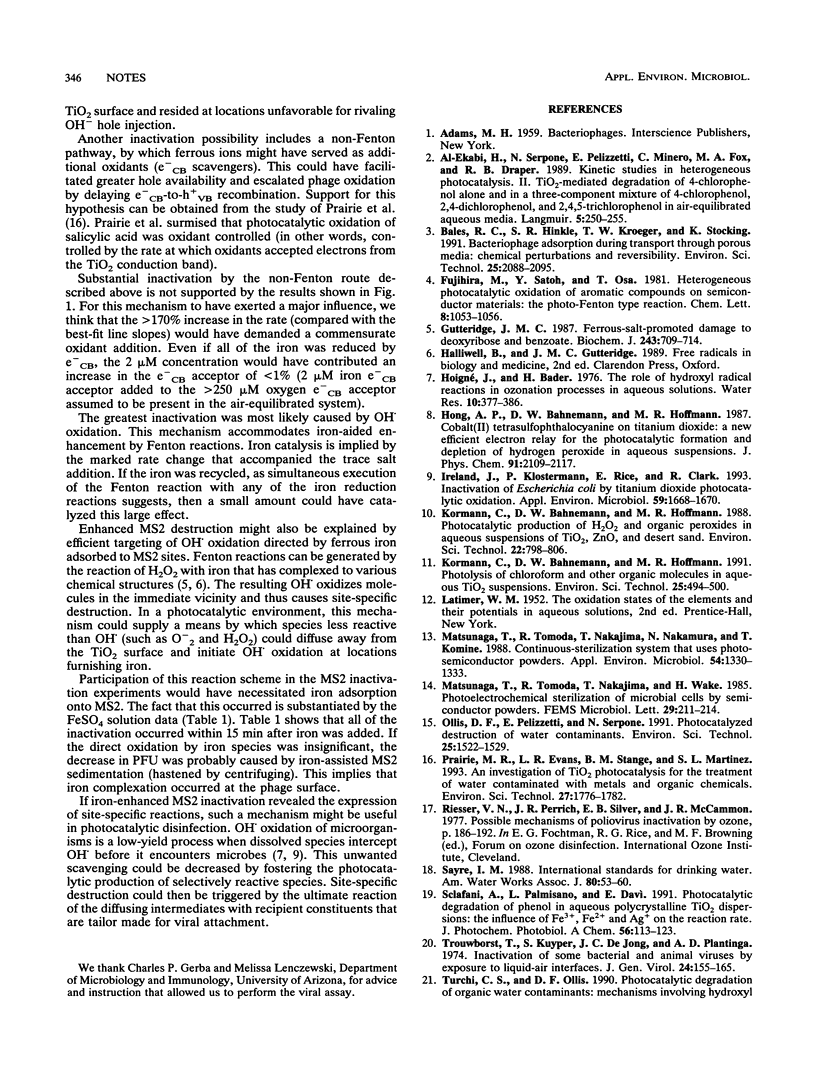Abstract
Near-UV photocatalytic disinfection was accomplished in aqueous titanium dioxide suspensions. A level of inactivation of phage MS2 of 90% increased to 99.9% after 2 μM ferrous sulfate was added. Hydroxyl radical oxidation, with Fenton reaction enhancement, is suspected to be primarily responsible for the viral degradation observed.
Full text
PDF



Selected References
These references are in PubMed. This may not be the complete list of references from this article.
- Gutteridge J. M. Ferrous-salt-promoted damage to deoxyribose and benzoate. The increased effectiveness of hydroxyl-radical scavengers in the presence of EDTA. Biochem J. 1987 May 1;243(3):709–714. doi: 10.1042/bj2430709. [DOI] [PMC free article] [PubMed] [Google Scholar]
- Ireland J. C., Klostermann P., Rice E. W., Clark R. M. Inactivation of Escherichia coli by titanium dioxide photocatalytic oxidation. Appl Environ Microbiol. 1993 May;59(5):1668–1670. doi: 10.1128/aem.59.5.1668-1670.1993. [DOI] [PMC free article] [PubMed] [Google Scholar]
- Matsunaga T., Tomoda R., Nakajima T., Nakamura N., Komine T. Continuous-sterilization system that uses photosemiconductor powders. Appl Environ Microbiol. 1988 Jun;54(6):1330–1333. doi: 10.1128/aem.54.6.1330-1333.1988. [DOI] [PMC free article] [PubMed] [Google Scholar]
- Trouwborst T., Kuyper S., de Jong J. C., Plantinga A. D. Inactivation of some bacterial and animal viruses by exposure to liquid-air interfaces. J Gen Virol. 1974 Jul;24(1):155–165. doi: 10.1099/0022-1317-24-1-155. [DOI] [PubMed] [Google Scholar]


